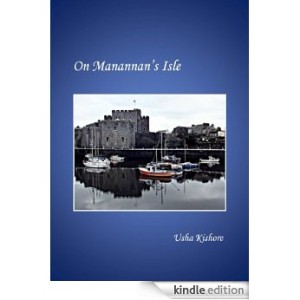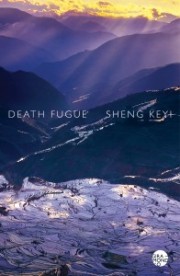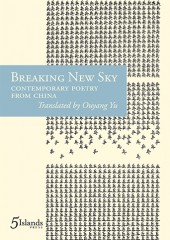Janette Dadd reviews “sweetened in coals” by Phillip Hall
 sweetened in coals
sweetened in coals
by Phillip Hall
ISBN 9781740278584
Reviewed by JANETTE DADD
Jacques Raubaud, at the Sydney Writer’s Festival of 2014 made the observation that poems differ from novels in that if they do not stir a memory then the poem will not be successful. The poet has precious time to invite the reader, to establish rapport and empathy. It has to be, by skill of the writing, a quick strike.
This might be a problem for Phillip Gijindarra Hall in his book sweetened in coals. Hall writes about place with a gentle passion; in fact he writes about three places. His subject is the bush, the people of the bush and the place where his heart finds peace and encouragement, within his family.
Hall is known for his work with Aboriginal Australians, and has been honoured by members of different ‘countries’. He is a long distance endurance bushwalker working with Aboriginal communities and the youth of these places. It is from this background and the obviously strong family ties he has, that his book of poetry springs.
Therein lies the problem. It is well known that most Australians are urban dwellers and coastal inhabitants. This makes Hall’s task hard. How can he stir memories for his readers if these readers have never been to the bush nor had exposure to its sounds, scents and creatures? Also, there are many Australians, especially people new to this continent, who have no understanding of the outlook, the cheeky humour and philosophy of the Indigenous people of our land. Hall quickly lets his readers know his position on, and passion for, a different telling of Australian history in his first poem, Carpentaria Running the Flag, its finishing lines being …….
……the rusted
landscape where a charged sphere percolates
Indigenous space.
Know this writer invites you to open yourself and learn more about the First peoples of our continent.
The book itself is comprised of three sections – Dwelling, Praise and Home. I found the section Dwelling the most powerful of the three parts for two reasons.
Firstly, it is in this section that Hall subtly reminds us of the story of Australia before European settlement. In poems such as “Palimpsest”, “Dystopian Empire” and “colonial heads“, Hall invites us to look beneath the surface and behind the history of white settlement Australia. He invites us to see just how clever, ingenious and nuanced Aboriginal culture is.
Secondly in poems such as “Habitation” the poet stirs memories for me with his descriptions of remnant rainforest on steep edges of farms……..
A green catbird forages ahead yowling
from a tangle of vines
or
You break in on a stand of
ironwood and turpentine.
These are images that take me back to living at Comboyne. Our farm was on the edge of the escarpment above Taree. I can practically smell the bush when I read, but I have a memory Hall has touched, so the poems have place for me. Would they work as well for an urban- dwelling Australian? I am not so sure.
“Dwelling” is an important piece of writing that slowly and meticulously reveals the history before ‘history’. It is important because people of British ancestry and our more recent new settlers need to know this history and move towards the respect that should be shown for this ancient place and its people. Perhaps then, the attitude of begrudging assistance can be changed and the different views and philosophies of Indigenous Australia be upheld as valid and important.
The second section, Praise, has a wholly different tone and presentation. It is as if Hall is enjoying a time of rest between his strenuous walks. Here are short descriptive poems of different Australian fauna. Again, because of memories stirred, I find many enjoyable poems. “This Creation” is an example of Hall at his best, capturing a natural vision with few words but with each carrying a great power to stimulate the mind’s eye:
…………black
leathered angels seeding
a Daintree, gallantly reclaiming
the Garden.
Then there is “Creative Tension” where Hall compares a spider’s web construction to a radio telescope, each facing skyward to track movement. “Willie” is a cleverly set-out poem, line breaks devised to mimic the movements of the Wagtail. It’s a successful poem.
The third and final section of sweetened in coals is titled “Home”. As the name implies there are poems here for his family – well, really poems dedicated to family and friends are scattered throughout the book. I especially like “A Humble Fire” – for his son Aidan, nearly three – which I thought a rather predicable poem until the last line.
Finally Hall is however, back in the bush or his Borroloola Class and maybe this is the most telling part of all. Here is where this writer is most at home, in the bush, walking, observing and recording. Back in his element, his joy, his love, his sense of meaning becomes apparent.
Hall takes us and drops us in many different places. His top-end poems I relate to less than when he is in NSW, especially the Southern Highlands. He is in my country then and I know the land he talks of. Is it important to know where we are? At one level – no – as the words are powerful and evoke images easily, at another level – yes – because knowing the place can add extra meaning to the reading. It is important to make use of the reference notes available for some poems. The added depth of meaning and knowledge is worth the flick to the back.
Hall has an unerring respect for the bush and its people. For some readers, with little experience of Australia outside of our slick urban scenes, this work will perhaps not be successful. There are no memories caught in his words. However, there is another audience who would enjoy the work, cover to cover. There are people who do not truly breathe until they have their sacred bush around them. I know people I will share sweetened in coals with; and I know they will relish Hall’s ability to capture, in words, what they experience as one of life’s great pleasures.
JANETTE DADD has had two books published with Ginninderra Press: Early Frosts in 2013 and Eve’s Tears in 2000. She has also had work published in various anthologies. Janette is a performance poet, presenting her work at venues on the South Coast of N.S.W. She is presently studying for a Bachelor of Fine Arts through Curtin University.







